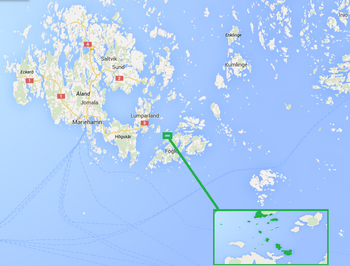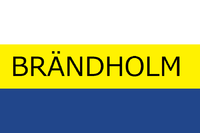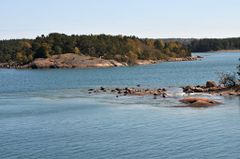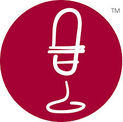Princely State of Brändholm
Princely State of Brändholm | |
|---|---|
| Motto: Vapaudessa luotamme I frihet vi litar In freedom we trust | |
| Anthem: Hail My Republic (popular) Freedom we embrace you (official) | |
 | |
| Capital | Wimsburg |
| Largest city | Iren |
| Official languages | English, Dutch, Finnish, Swedish, Esperanto, Julholmese |
| Demonym(s) | Brändholmer Brändholmese |
| Government | Constuitional Monarchy |
• Crown-General | Shady Morsi |
• Prince | Wim |
• Prime Minister | Johannes von Doorn |
| Legislature | Landskämer |
| Establishment | 2013 |
| Population | |
• Census | 112 |
| Currency | Euro (de facto) Brandholmer Kron (de jure) |
| Time zone | UTC +7 |
Website Official Website | |
Brändholm (also referred as Brandholm), officially the Princely State of Brändholm, is an unrecognized, self-declared separatist nation, generally regarded as a micronation. Situated in the Fennoscandian region of Northern Europe, it comprises 9 main landmasses, 16 skerries which form the Territorie of Kivientä and Syeat, and an extraterritorial enclave in the Netherlands.
As of 2015, Brändholm's population is 122, with the majority concentrated in extraterritorial areas. Brändholm is a semi-presidential republic with a central government based in the capital of Syeat, and has local governments in 6 provinces. The de facto capital of the Republic is Syeat, due to the fact that it maintains strong political and military control over the region.
Brändholm is a democratic, semi-developed micronation, which scores 5.6 on Dresner's System of Classification. In addition, it is a "6th World" micronation, according to the Whole Picture calculation of the Boodlesmythe-Tallini System of Classification and Dan's System of Classification. On Miles's Scale of Economic Potential, Brändholm scores a 3.
Etymology
The name Brändholm is derived from the name of the main island, Brändholm.
History
History of Åland
The Åland Islands formed part of the territory ceded to Russia by Sweden under the Treaty of Fredrikshamn in September 1809. As a result, along with all other parts of Finland, they became part of the semi-autonomous Grand Duchy of Finland.
During this process, Sweden failed to secure a provision that the islands not be fortified. The issue was important not only for Sweden but also for the United Kingdom, which was concerned that a military presence on the islands could threaten Britain's military and commercial interests.
In 1832, Russia started to fortify the islands with the great fortress of Bomarsund. A combined British and French force of warships and marines captured and destroyed the fortress in 1854 as part of the campaign in the Baltic during the Crimean War. The 1856 Treaty of Paris demilitarized the entire Åland Islands archipelago.
During the Finnish Civil War, in 1918, Swedish troops intervened as a peacekeeping force between the Russian troops stationed on the islands and "White" and "Red" Finnish troops who came from Finland over the frozen sea. (Historians point out that Sweden may have in reality planned to occupy the islands.) Within weeks, the Swedish troops gave way to German troops who occupied Åland by request of the "White" (conservative) Senate of Finland.
After 1917 the residents of the islands worked towards having them ceded to Sweden. In 1919 a petition for secession from Finland and integration with Sweden was signed by 96.4% of the voters on the islands, with over 95% in favour, although serious questions later arose regarding this extraordinarily high figure.[citation needed] Swedish nationalist sentiments had grown strong particularly as a result of the anti-Swedish tendencies in Finland and Finnish nationalism fueled by Finland's struggle to retain its autonomy and resistance against Russification. The conflict between the Swedish-speaking minority and the Finnish-speaking majority on the mainland, prominent in Finish politics since the 1840s, contributed to the apprehension of Åland population about its future in Finland.
Finland, however, declined to cede the islands and instead offered them an autonomous status. Nevertheless the residents did not approve the offer, and the dispute over the islands was submitted to the League of Nations. The latter decided that Finland should retain sovereignty over the province but that the Åland Islands should be made an autonomous territory. Thus Finland was obliged to ensure the residents of the Åland Islands the right to maintain the Swedish language, as well as their own culture and local traditions. At the same time, an international treaty established the neutral status of Åland, prohibiting the placing of military installations or forces on the islands.
In the course of the 20th century, increasing numbers of the islanders have perceived Finnish sovereignty as benevolent and even beneficial.[citation needed] The combination of disappointment about insufficient support from Sweden in the League of Nations, Swedish disrespect for Åland's demilitarized status in the 1930s, and some feelings of a shared destiny with Finland during and after World War II has changed the islanders' perception of Åland's relation to Finland from "a Swedish province in Finnish possession" to "an autonomous part of Finland".[citation needed] The islanders enjoyed safety at sea during World War II, as their merchant fleet sailed for both the Allied countries and Germany. Consequently Åland shipping was not generally attacked as each side rarely knew which cargo was being carried to whom.
Finland marked the 150th anniversary of demilitarisation of the Åland Islands by issuing a high-value commemorative coin, the €5 150th Anniversary of Demilitarisation of Åland Islands commemorative coin, minted in 2006. The obverse depicts a pine tree, frequently found in the Åland Islands. The reverse design features a boat's stern and rudder, with a dove perched on the tiller, a symbol of 150 years of peace.
History of Föglö
In the Middle Ages Föglö was a relatively densely populated area, because of its location along the route from Sweden to Finland and the Baltic coast. Ships made a stopover in Föglö. Later, as with larger ships dangers was that did not stop prematurely, reduced the importance of this island.
Empire of Soldania
Brändholm is a private island owned by Lars "Dat" Vikensen, and soon Soldania was formed by Lars "Dat" Vikensen, originally as an art project and a free community like Ladonia but it was based on the Holy Roman Empire. Shortly afterwards, Lars claimed the island of Gripö and surrounding islands as main claim Despite. Brändholm was proclaimed as Imperial City of the Empire Lars did more research into this and found the Republic of Molossia. He got inspired by these two micronations and wanted to make The Empire had wars such as the Gripönese Wars a war between the United Principalities and The Self Kingdom of Gripö The empire was absolute and the empire was inactive. It was dissolved in 2010
Principality of Brändholm
Soon after the fall of Soldania Brändholm became a principality located in the island of Brandholm. It was created in 2013 following the fall of Soldania.and was the first incarnation of a serious Brändholmer state The capital of the state was Brandfors the prince was Wim I In 2014 the Principality has been disbanded due lack of inactivty and the disappearance of the prince
Independent Brändholm

Brändholm was declared on 21 November 2014 as an independent state claiming Brändholm and Jutholm, 2 islands in Aland. During the first two weeks of existence, the Republic was inactive and was dissolved
Re-Active

Around 2015, Brändholm was re-established and a socialist government was instaled transformed into the Socialist People's Democratic Republic of Brändholm. with was established by Sam Bakker Shady Morsi and Wessel de Wekker during this era, having a marxist-leninist ideology However more people joined the Republic and demanded democratisation to avoid a civil war
Sam started The Democratisation of Brändholm making Brändholm a Direct Parliamentary Democracy and Shady was elected as president
On 24 January the Government of Brändholm decided to annex the remnants of Serdesia a former micronation with has been transformed into an extraterritorial enclave, On 29 January The republic started to claim Yttre Julholmskläppen
Stateist Era
In the last time of the republic. Various disputes and disagreements within the government and parties with separate from other party. Also due a lack of some citizens the republic collapsed Julholm declared independence from Brandholm the remnants of the republic formed the State of Brändholm considers of Brandholm island however on the 9th of March. The Republic of Julholm proclaimed the merger with Brandholm
Recent
On 2015 the government returned to the old system, The confederacy is aboslished as on 2 june Brandholm started the Kunnia War
Monarchy
On 2015 the government returned to the old system, The confederacy is aboslished as on 2 june Brandholm started the Kunnia War After the war the YOG dispute begon and the Prince returned to the country. constitutional referendumwas held in Brandholm on 26 June 2015 a key event of Brandholmerhistoryruled by various presidents Soon with 76% of the votes the monarchy is re established
Government
The Princely State of Brändholm is a constitutional monarchy with a parliamentary democracy, although its constitution is not codified.Wim is the Prince of the Princely State of Brändholm and the head of state. The Prince is represented by the Crown-General, whom he appoints on the advice of the Prime Minister. The Crown-General can exercise the Crown's prerogative powers, such as reviewing cases of injustice and making appointments of ministers, ambassadors and other key public officials, and in rare situations, the reserve powers (e.g. the power to dissolve Parliament or refuse the Royal Assent of a bill into law).The powers of the Prince and the Crown-General are limited by constitutional constraints and they cannot normally be exercised without the advice of Cabinet.The Brandholmer Parliament holds legislative power and consists of the Prince and the Landskamer It also included an upper house, the Senate, until this was abolished in 2015.The supremacy of Landskamer, over the Crown and other government institutions, The Landskamer is democratically elected and a Government is formed from the party or coalition with the majority of seats. If no majority is formed a minority government can be formed if support from other parties during confidence and supply votes is assured. The Crown-General appoints ministers under advice from the Prime Minister, who is by convention the Parliamentary leader of the governing party or coalition. Cabinet, formed by ministers and led by the Prime Minister, is the highest policy-making body in government and responsible for deciding significant government actions. By convention, members of cabinet are bound by collective responsibility to decisions made by cabinet;
Political parties
Brandholm is a multi-party state. Coalitions are often formed between parties because there are so many.
States
Brändholm is a federation of numerous States, also called republics, who are guaranteed numerous rights outlined in the Constitution.
| Flag | Emblem | Name | Admission | Population | Landskamer Delegates | Head of State | Head of Government | |||||
|---|---|---|---|---|---|---|---|---|---|---|---|---|
| Federal District | ||||||||||||

|
District of Seyat | 2014 | 12 | Jonathan Geizel
| ||||||||
| States | ||||||||||||

|
Brändholm | 2013 | 23 | Mishou Morsi | Mishou Morsi | Gijs Barenveld | ||||||
 |
Julholm | 2014 | 9 | Maxim Leigh | Lotte Leigh
| |||||||
 |
Inre | 2015 | 4 | Yusef Lifkomen (NP) Said Takbar (NP) |
Yusef Lifkomen
| |||||||

|
Nordland | 2015 | 12 | TBA | Johan Lindstorm | Thomas Ben | ||||||
| Territories | ||||||||||||

|
Kivientä | 2014 | 0 | Vacant
| ||||||||
| Angelholm | 2015 | 0 | Vacant
| |||||||||
Law and Order
Law enforcement in Brandholm is the responsibility of the Civil Guard (due the fact Brandholm dont have a police force). Jurisprudence operates on a Retributive justice system, with crimes being tried by a Province Court, a City Court, or the National Court, depending on the severity of the offence.
Foreign relations
The foreign relations of Brandholm are handled by the Minister of Foreign Affairs of Brandholm. Brandholm participates fully in regional organizations. Brandholm has developed increasingly close ties with Langholm foreign and economic ministers hold annual meetings. Brandholm have also embassies in the world The close friendship with Långholm has been the linchpin of Brandholmer foreign policy for decades. This is because Langholm was the first nation, micro or macro, to recognize Brandholm's soverignty.
- Brandholm only recognize states when they have at least 4 citizens
- Brandholm does not recognize states that claim Bir Tawil, extraterrestrial areas, or any other "unserious" places
- Brandholm does not recognize states which claim Brandholmer territory
- Brandholm will not enter relations with nations that opposed Brandholm in a war
Recognised; no relations
 All member states of the United Nations
All member states of the United Nations Vatican City State
Vatican City State Republic of Kosovo
Republic of Kosovo Republic of China (Taiwan)
Republic of China (Taiwan) Principality of Sealand
Principality of Sealand Republic of Abkhazia
Republic of Abkhazia Nagorno-Karabakh Republic
Nagorno-Karabakh Republic Turkish Republic of Northern Cyprus
Turkish Republic of Northern Cyprus State of Palestine
State of Palestine Federal State of New Russia
Federal State of New Russia Free Papua Movement
Free Papua Movement
Full diplomatic relations
 Federal Republic of Hasanistan
Federal Republic of Hasanistan Kingdom of Nusa Barung
Kingdom of Nusa Barung Acadian Republic of Vulkron
Acadian Republic of Vulkron Republic of Viadalvia
Republic of Viadalvia State of Långholm
State of Långholm Federation of Bosmansk
Federation of Bosmansk People's Republic of Hashima
People's Republic of Hashima Great Empire of Dikameppra
Great Empire of Dikameppra Empire of Gajajima
Empire of Gajajima- Smithville
- Ubago
 Dolmenia
Dolmenia- File:Hels flag.png Helsvenia
 Confederation of Mahuset
Confederation of Mahuset
Informal relations
 Republic of Akebar
Republic of Akebar Democratic People's Republic of Arthur
Democratic People's Republic of Arthur Democratic Socialist Federation of Nedlandic Republics
Democratic Socialist Federation of Nedlandic Republics
Geography
Brändholm has a total of 8 islandsl and enclave and 1 Exclave located in Föglö. The main island, from north to south, are Dannholmen.the 2 Julholmsklappen islands, Julholm and Brandholm Together they are often known as the Mainland. Syeat a Special Municipality of the Republic located In Holland It is named after the former micronation Seyat
Mainland

The Mainland is an archipelago of 5 islands and 4 islets in the Baltic Sea, 3 km (1 mi) from Foglo offshore from the Finnish coast. The archipelago got its name from the government,The main island is Brändholm and had a population estimated at 1 Brändholm is owned and controlled by the government and has been considered as the "brain and heart of the republic"
Seyat

Seyat is the main region of Brandholm, Wimsburg the capital city of Brandholm, it is situated on the Eastern Brandholm border with the Netherlands. Wimsburg is the Capital of Brandholm. The mainland consists of slightly sloped, grassland. and a Playground The capital Seyat resides on international borders on two sides. The highest point on Seyat mainland is 1 meters above sea level. The land is mainly filled with grass and surrounded by a large border wall on all sides. The territory is owned and control by the government.
Military


The Statenförsvar (State Defence) comprise three services: the Army,the navy and the Air Force and Air Defense (a unified branch). It was partially formed out of the former Derskovian Army forces stationed in the Capital The Commander-in-Chief of the military is the President of Brandholm, Shady Morsi. The Ministry of Defense is in charge of political leadership, headed by Timo Bakker, while military command remains on the president The Army is the largest branch of the Statenförsvar and consists of the ground forces responsible for the country's land-based operations. It was established in conjunction with the other components of Brandholmer military on 2014, several months after the republic declared its independence from finland The Navy is the Naval component of the Statenförsvar operating in the Coast and Other Areas.It have one Ship the BAS Vaikomen it have also a marine infantary
Economy

The currency of Brändholm is the Brandholmer Kron (K), which is regulated by the Statbanka. The Chairman of the Bank is Dennis der Lee He announced the creation of the Federal Revenue and Customs, controlling Its only used in the cultural regions of the republic
Exports

Brändholm use the Brändholm has a highly marked mixed economy with a per capita output equal to that of other European economies such as Finland,Sweden. The largest sector of the economy is export at 66%, followed by trading and refining at 31%. Primary production is 2.9%. With respect to foreign trade, the key economic sector is selling fruits and vegetables from Serdesia.
Culture
Brandholmer culture is considered a branch of the Nordic cultures of Europe. The As aforementioned, the culture is based on that of Northern Europe, however is mostly influenced from Finland. There are many different ethnic groups within the Republic, but the country is mostly influenced by the Finnish-Swedish traditions, With clothes, a Western-European style is mainly adoptes due to the position of The Republic. However, many men and women wear casual and other such items too. The cuisine is mainly meat, such as cow, horse and pork; Brandholms national drink is Dazul with actuly water with alcohol
Sports
The national sport is paddling. Due the fact Brändholm is an island nation, Other sports including football (It played a match with South Gripo) and Shother, A re-enactment game with the goal to drive the enemy club away
Cuisine

Brändholmer Cusine refers to the food which is considered tradional in Brändholm or recopies which have been developed by Brändholmer citizens. It also refers to the shared culinary trates found in Brändholmer people.





